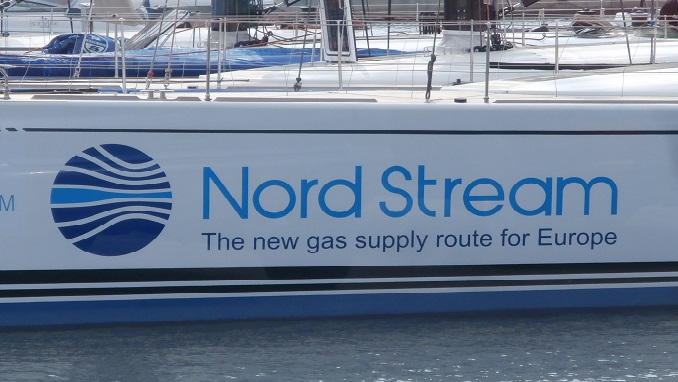The Academic Cherskiy pipe-laying vessel, previously called by the Russian Minister of Energy Alexander Novak, the possible equipment for the completion of the Nord Stream-2 gas pipeline, is approaching Bornholm Island in Denmark’s exclusive economic zone (EEZ), located in the vicinity of the pipeline construction stoppage, according to tracking portals data made public on Friday, TASS reported.
On October 30, the Danish Energy Agency (DEA) granted Nord Stream 2 permission to lay Nord Stream 2 along a route southeast of Bornholm Island.
In February, the ship left Nakhodka in the Far East and sailed towards Singapore, where it was supposed to arrive on February 22. Changing the endpoints of the route several times, the ship circled Africa, arriving in Las Palmas (Canary Islands). Further, the route was laid to Egyptian Port Said, where the Academic Cherskiy was supposed to arrive on April 30. However, the ship never passed the Strait of Gibraltar, heading to the North Atlantic Ocean with a course to the port of Aberdeen in the UK. On Sunday, Academic Cherskiy changed the endpoint, again indicating Nakhodka. Then the course was laid to Kaliningrad, where the ship should arrive on May 3.
Since 2016, the pipe layer has been in operation by Gazprom Fleet. At the end of December 2019, due to US sanctions, the Swiss Allseas stopped the construction of the Nord Stream 2 and took away its pipe-laying vessels.
The head of Gazprom Alexei Miller said that the pipeline will be completed on its own. Russian Energy Minister Alexander Novak, called the vessel Academic Chersky a possible participant in Nord Stream 2 construction. According to forecasts of the Ministry of Energy, the launch of the pipeline can be expected before the end of 2020. Nord Stream 2 is built at 93%.
Nord Stream 2 is an international project for the construction of a gas pipeline that will run across the bottom of the Baltic Sea from the Russian coast to Germany bypassing transit states, such as Ukraine, Belarus, Poland and other Eastern European and Baltic countries.
The new 1,200 kilometer pipeline, basically following the same route as Nord Stream, will traverse economic zones and territorial water of five countries, namely Russia, Finland, Sweden, Denmark, and Germany. The pipeline’s capacity will be 55 billion cubic meters of gas a year.
In late December 2019, US President Donald Trump signed the National Defense Authorization Act (NDAA) specifying the annual budget and expenditures of the US Department of Defense for 2020 fiscal year (started on October 1), which obliges the Administration to impose sanctions on Russia’s Nord Stream 2 and TurkStream pipelines. Swiss pipeline laying company All Seas suspended its work on the Nord Stream 2 project in the Baltic Sea.
On February 4, Handelsblatt newspaper reported citing US diplomatic sources, that the US intends to impose new sanctions on the Nord Stream 2 gas pipeline if Russia attempts to complete its construction.












